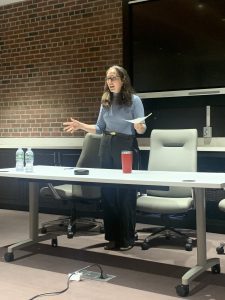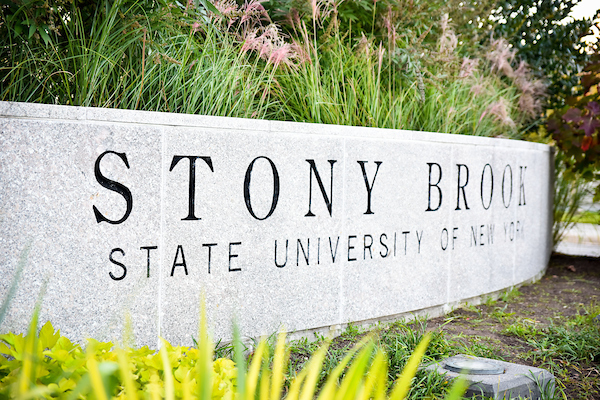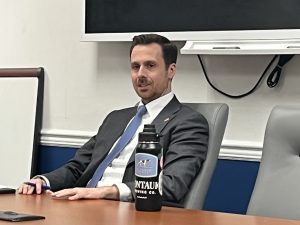By Sabrina Artusa
Carl Mills, Stony Brook University associate vice president of government relations, and Heather Banoub, assistant vice president of community relations at the university, were joined by Assemblywoman Rebecca Kassay (D, Port Jefferson) to speak on budget priorities, which include adding housing options to the campus.

Besides pushing legislation to grow their advanced specialty care facilities throughout the county, Mills said Kassay is helping the university with legislation to allow the university to contract nearby fire districts for access to equipment. Currently, the university has its own fire services but still works closely with surrounding departments.
“It will be a cross benefit not only for the university but the taxpayer if we can contract for surplus equipment that fire districts have,” said Mills.
The university is also planning a housing project that can provide up to 1,900 beds so Simon Scholars, medical residents and junior faculty can have on-campus housing options. The project is not meant to allow the university to admit more incoming students, but to “allow young professionals” a space on campus.
Some residents were concerned that traffic will not be able to sustain growth and neighboring communities will suffer. “I know you guys want to grow, that is your job, but I live there and traffic still sits in front of my house,” one resident said. Mills said a traffic study is being conducted.
Legislation is needed to execute this project, which Mills said is not unusual for this “long-term project.” The university will form a housing and development corporation, which would lease the property, submit a request for proposal and solicit bids.
“We don’t have the funding as it stands to do this on our own,” Mills said. “We have financial challenges in that we don’t know what is happening on the federal level.”
The project would require the relocation of the track behind LaValle Stadium and off Route 25A.
In August 2024, many students were pushed off campus or into cramped accommodations after two dormitories were flooded. “As the flagship university, we just can’t be in that position,” Mills said.
Funding projects
In her first budget cycle as a state assemblymember, Kassay reported on several budgetary items, such as securing $1 million for SBU’s cancer research center, $1 million for clean water research and $330,000 for a nursing training program at the Long Island State Veterans Home.
She also helped eliminate the Metropolitan Transportation Authority payroll mobility tax from municipalities. The tax impacts employers, so the elimination offers relief to the Town of Brookhaven and other suburban municipalities. Small businesses are still affected by the tax, but to a diminished degree.
Kassay said she is excited to support a bigger, better bottle bill, which will extend the array of items that can get recycled and increase the deposit return to 10 cents.
She also said she is working to diminish needless plastic waste by requiring restaurants to give the option of plastic utensils for a takeout order rather than instantly including them.
The legislation would mean that “restaurants, when doing a takeout order cannot give you those items unless you consent to taking those items. So they can ask you, and you can say yes, or you can ask them… and that is absolutely legal,” Kassay said. “They just can’t force them.”
“For us facing enormous waste problems here, this isn’t going to solve it entirely but it is sure going to help in as far as reducing waste.” The legislation has failed in Suffolk in the past, but Kassay is optimistic that the move would be a win-win for businesses and consumers alike.








